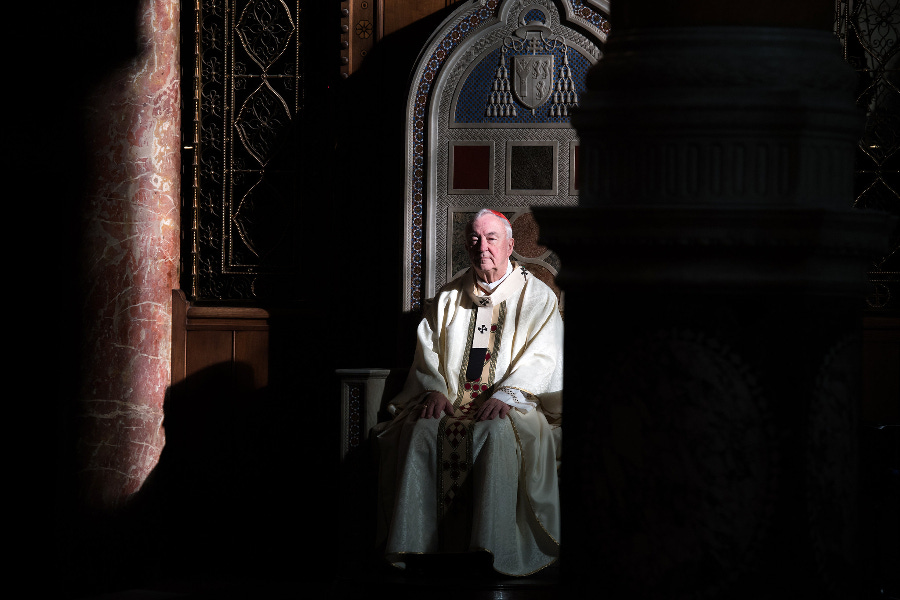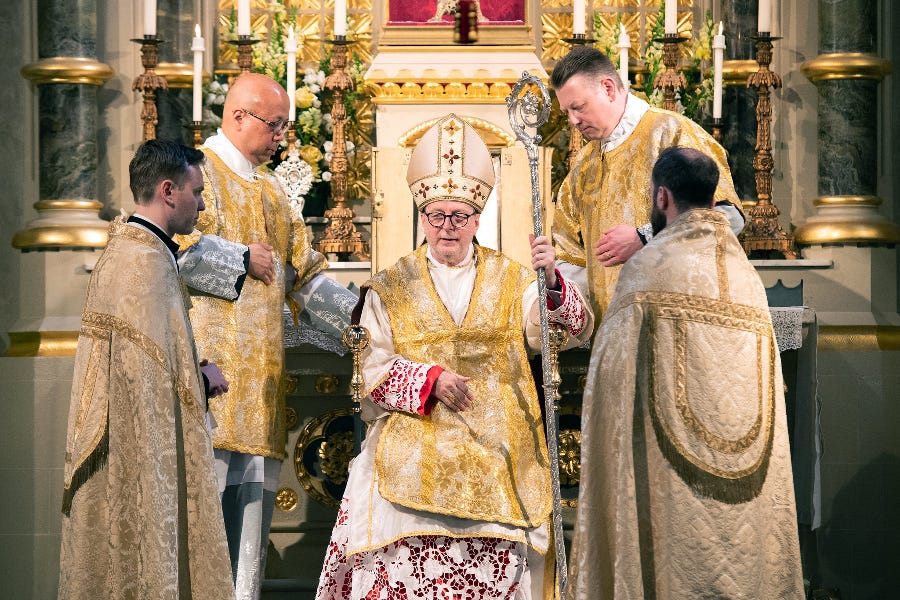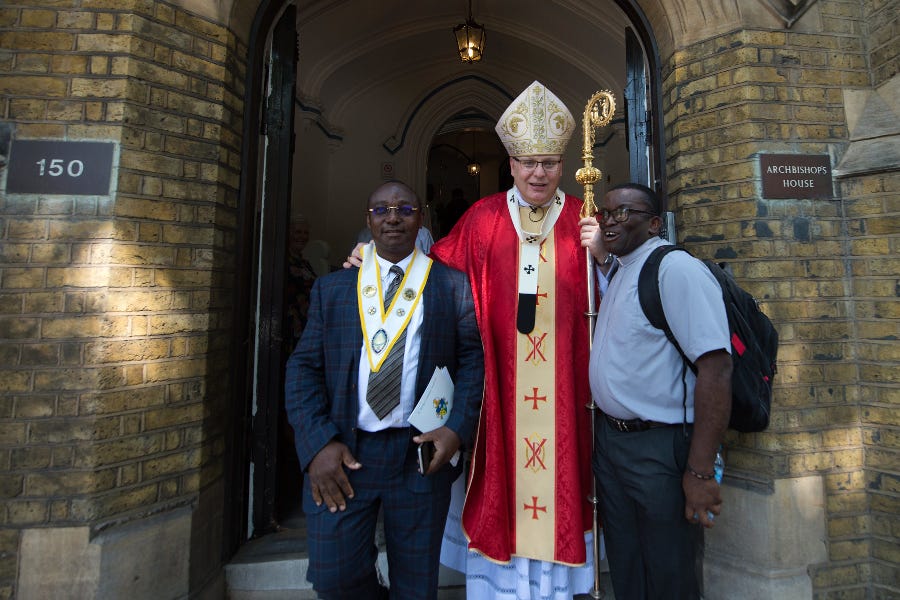

Cardinal Vincent Nichols has led the English Archdiocese of Westminster since 2009.
He offered his resignation as the 11th archbishop of Westminster to Pope Francis when he turned 75 in 2020.
The pope formally accepted Nichols’ resignation, but asked him to remain in office donec aliter provideatur (until further provision is made). Now, the process of selecting his replacement is beginning, sources have told The Pillar.
So who is in the running to lead England’s premier see and with it, by custom, the Bishops’ Conference of England and Wales?

The selection process
It didn’t come as a particular surprise that Pope Francis chose to accept Nichols’ resignation “nunc pro tunc” (“now for later”), and Rome likely deemed it a low priority given that the cardinal is trusted by the pope and there are many other pressing appointments to be made around the world.
The Vatican has moved slowly in other metropolitan sees. Cardinal Christoph Schönborn offered his resignation as archbishop of Vienna before he turned 75 in 2020 but has been asked to stay on for an “indefinite period.”
Outside of Europe, the pope also asked the now 78-year-old Cardinal Seán O’Malley to remain as the archbishop of Boston. Cardinal Oswald Gracias continues to lead the Archdiocese of Bombay at 77. Both O’Malley and Gracias are members of the pope’s Council of Cardinals and the pope seems in no hurry to relieve them of their local responsibilities.
There are scores of other diocesan bishops worldwide serving past the retirement age of 75. But they cannot remain in post indefinitely: with exceptions made only in the most extraordinary of cases, the Vatican’s praxis is that while a bishop, archbishop, or cardinal might be asked to stay on past 75, the expectation is they will definitely be retired by the time they turn 80.
With Nichols approaching his 77th birthday on Nov. 8, the wheels have begun to turn, The Pillar has been told.
It is customary for the apostolic nuncio to Great Britain - currently Archbishop Claudio Gugerotti - to lead the confidential search, seeking opinions about potential candidates before ultimately presenting a list to the Vatican’s Congregation of the Bishops. The congregation then offers its recommendations to the pope, who chooses the next archbishop.
While the process is expected to take between one and three years and nothing is certain, here is a look at several of the likely candidates:

Recurring names
One potential candidate often mentioned in conversations between English Catholics is Archbishop John Wilson of Southwark. He was baptized in the Anglican Church but became a Catholic at the age of 16 and was ordained a priest of the Diocese of Leeds at 27.
Wilson was appointed a Westminster auxiliary bishop in 2015 and, just three years later, as head of the Archdiocese of Southwark, which covers London south of the River Thames and its environs. One senior Westminster priest, speaking on background, described Wilson as a “solid” and “good” man with the “zeal of the convert.”
The 54-year-old archbishop was recently embroiled in a controversy over the invitation of an LGBT author to speak at a Catholic school in the Southwark archdiocese — Wilson backed the event’s cancellation, kicking off a storm of protest. It is unclear what impact the incident will have on Wilson’s possible candidacy.
Other bishops discussed among English Catholics include Bishop Marcus Stock of Leeds, the 60-year-old former general secretary of the Bishops’ Conference of England and Wales, who recently accompanied a group of abuse survivors to meet with Pope Francis.
Also mentioned is Bishop John Arnold of Salford, 69, a former auxiliary bishop of Westminster who is chairman of the board of trustees of Cafod, the English and Welsh counterpart of the U.S. Catholic Relief Services.
The ecumenical expert Archbishop Bernard Longley of Birmingham, 67, might also be considered. He was a former Westminster auxiliary. So, briefly, was Cardinal-designate Arthur Roche, 72, who may be too useful in his present role as prefect of the Dicastery for Divine Worship to return to England (as well as too old for the new position).
A possible wildcard would be Bishop Hugh Gilbert, currently president of the Bishops’ Conference of Scotland. The 70-year-old bishop of Aberdeen was born in southern England and is a Benedictine, like Cardinal Basil Hume, the Archbishop of Westminster from 1976 to 1999.
If it is becoming clear who is in the race to succeed Nichols as the de facto head of the English Church, there is no clear frontrunner.
What’s next
Like most septuagenarians, Cardinal Nichols is probably looking forward to his retirement. Leading the Diocese Westminster is onerous and archbishops typically died in office until Nichols’ predecessor, Cardinal Cormac Murphy-O’Connor, became the first to retire in 2009.
With his retirement on the horizon, Nichols may be reluctant to take certain long-term decisions. For example, Westminster usually has four auxiliary bishops but has been reduced to three since then-Bishop John Wilson went to Southwark in 2019. Nichols may think it best to allow his successor to ask for a new auxiliary.
The Bishops’ Conference of England and Wales may also avoid drawing up any far-reaching plans for now, given that it’s likely to have a new president by 2024.
One thing, however, is certain: the succession will be the focus of intense attention as soon as the search for the 12th archbishop of Westminster enters high gear.










+John Wilson is by far the best bishop in England.